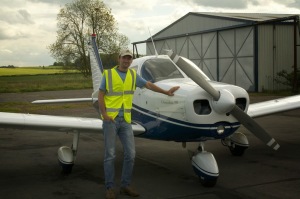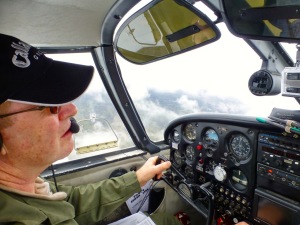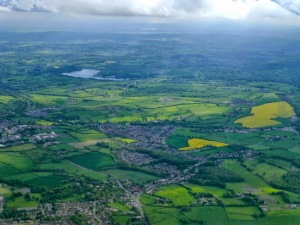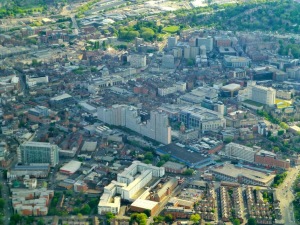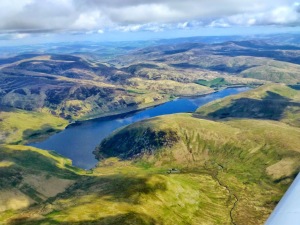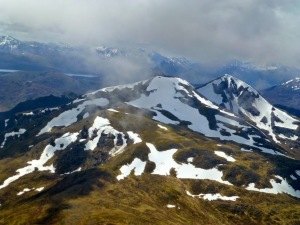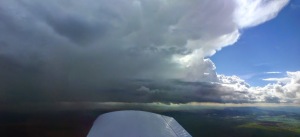A couple of weeks ago, I had the opportunity to join a friend in a single prop plane to some key geologic localities that can be observed from the air better than they can be seen from the ground. While most of us use Google Earth for that, seeing an oblique view from 2-3 thousand feet was a brilliant experience. Thanks to Ian for a grand time!
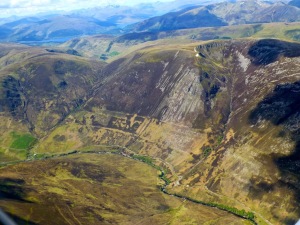 |
| The Parallel Roads of Glen Roy |
The Parallel Roads of Glen Roy are of particular interest as their formation was surrounded by legend and mystery until science came around. It was initially thought these roads were formed by the giant Fingal. In the 19th century, naturalists began devising ways thing which these road could have formed. Sir Thomas Lauder-*** was the first to suggest that these roads were ancient lake shores but was unable to offer a probable explanation how the lake could have been retained with a water depth of over 1000 feet above sea level. He thought that perhaps a fault or massive slide had allowed for the water to rush out of the valley, but as Thomas Jamieson observed,
“But there is not a jot of evidence that any such have taken place since the period of these lakes. No fault has anywhere been detected in the lines ; and they are so horizontal and undisturbed that, even apart from many other objections, these circumstances alone are incompatible with the notion of great convulsions having rent the surrounding district” (Quarterly Journal of the Geological Society 1863, v.19; p235-259).
“Another mode of explanation,” Jamieson explained, “presented itself in supposing the sea to have been the agent. Sink the country to the level of the highest line, and we should have a sea-margin corresponding to it ; and then as the land gradually emerged, successive coast-lines might be traced corresponding to all those we find.” This was the theory strongly favored by Charles Darwin. Darwin’s support of uplifted shoreline terraces was understandable considering his experience on the Beagle around the southern Andean coastline where he observed an uplifted coastline of a tectonically active continental margin. At the time of Jamieson’s writings Darwin’s theory was the generally accepted view. However, in 1840 this was all challenged when Louis Agassiz came to Britain. Agassiz was a professor at the University of Neuchâtel in Switzerland. His work was primarily focused on glacial geomorphology. He came to Britain to search for glacial features in a land that no longer had any glaciers. As you can imagine, evidence for glaciation was everywhere. In the case of the Parallel Roads of Glen Roy, Jamieson recounts that, “Ice, in short, had been the barrier that no one could find, and which, on the approach of a more genial climate, had melted before the heat of the sun, and vanishing left “not a wreck behind.” Agassiz’s theory has held up over the past 170 years. Recent cosmogenic nuclide exposure ages of the Parallel Road put their formation age at 11,500 to 11,900 years old, right at the end of the last ice age (Fabel et al., Journal of Quaternary Science, 2009). Seeing this sight from the air provides a whole new perspective!
From Glen Roy, we continued northward until we crossed the Great Glen fault at Loch Lochy. This linear feature is seen prominently on any map of Scotland as it forms a straight line that bisects the entire island. Glaciers have carved out the delicate fault gouge leaving behind a string of elongate lakes spanning from Inverness in the east through Loch Ness to Fort William in the west.
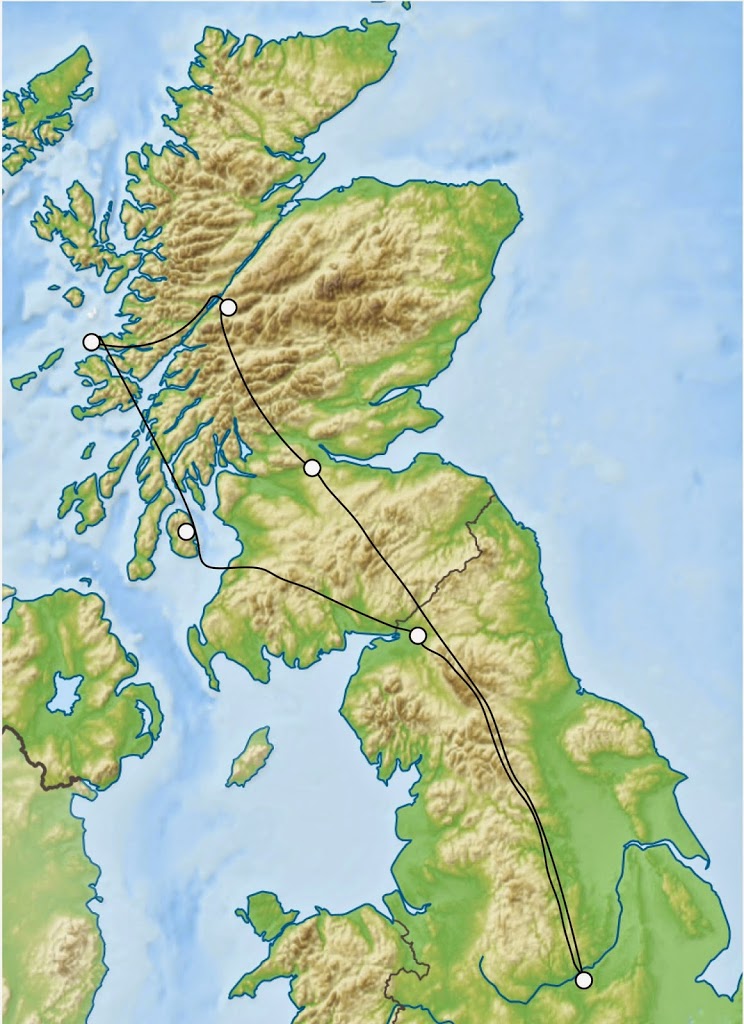
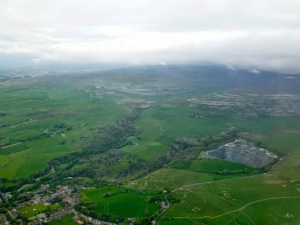
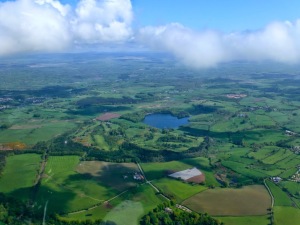
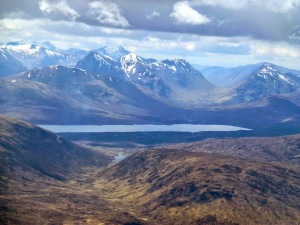

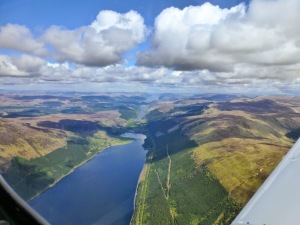
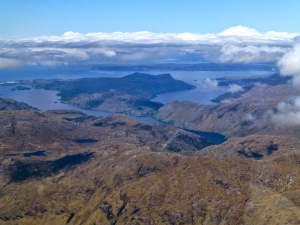
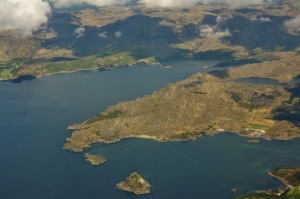
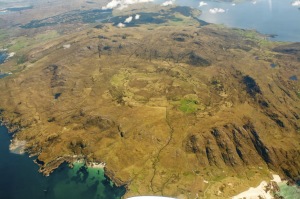
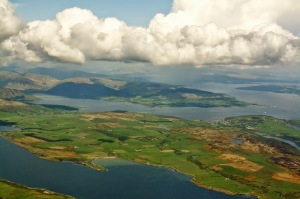
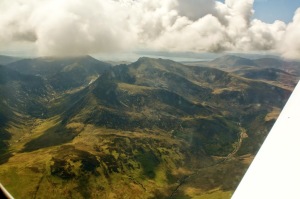
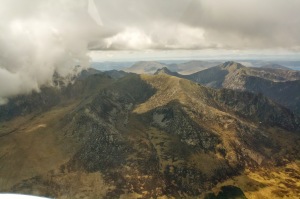
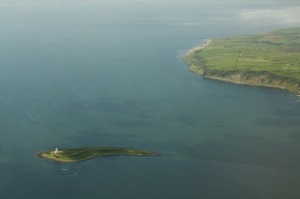
![]() This work is licensed under a Creative Commons Attribution-NonCommercial-ShareAlike 4.0 International License.
This work is licensed under a Creative Commons Attribution-NonCommercial-ShareAlike 4.0 International License.
